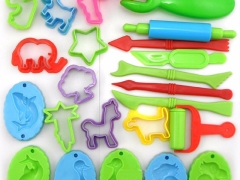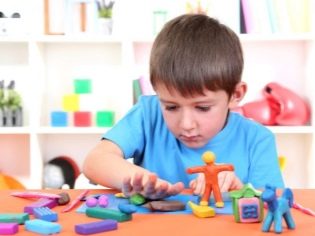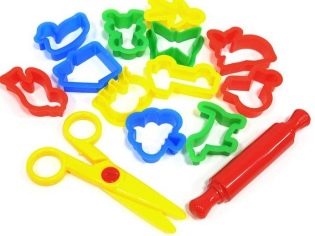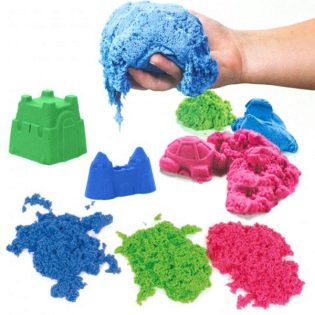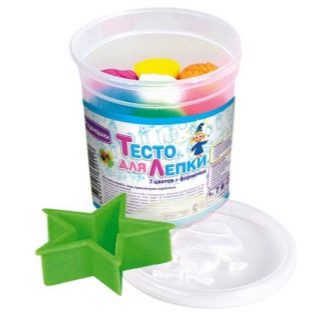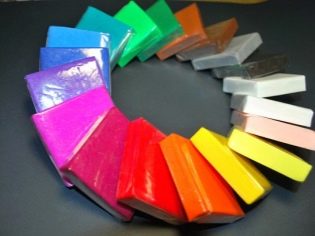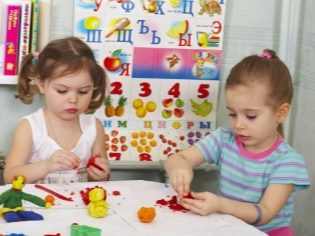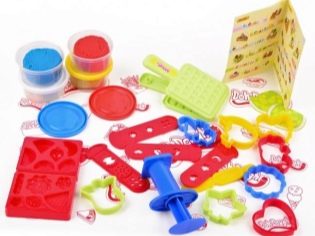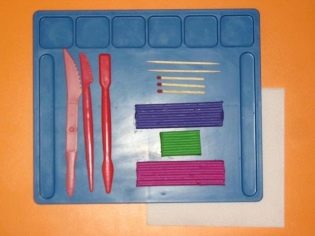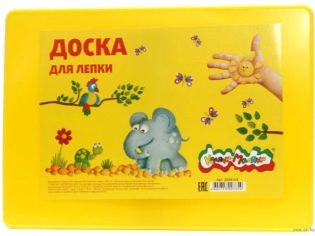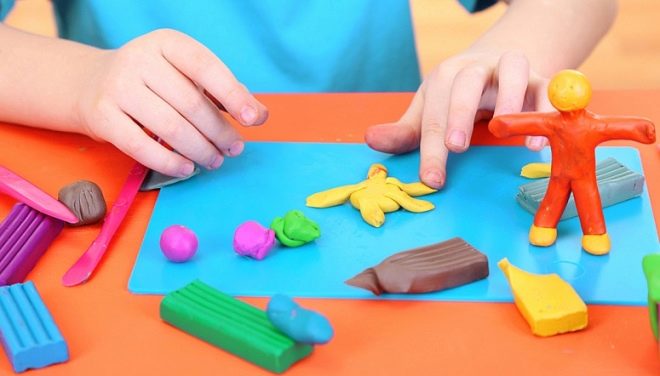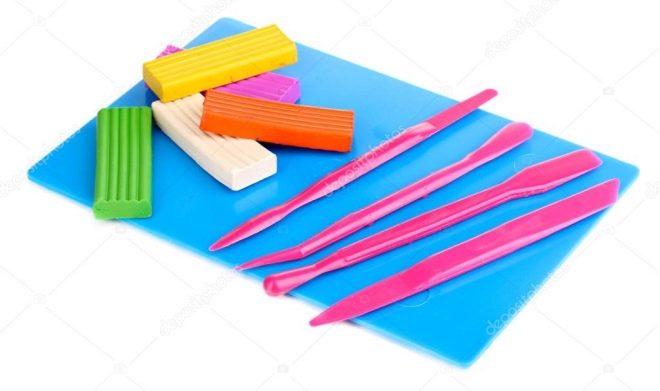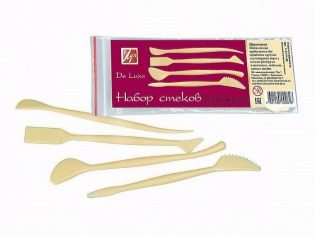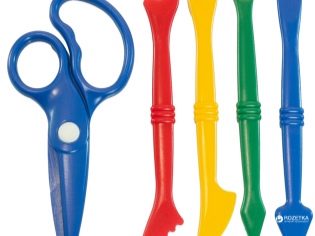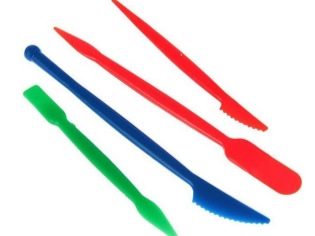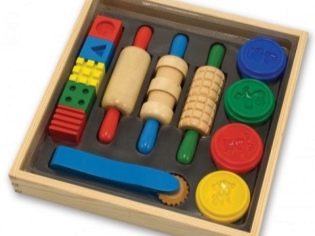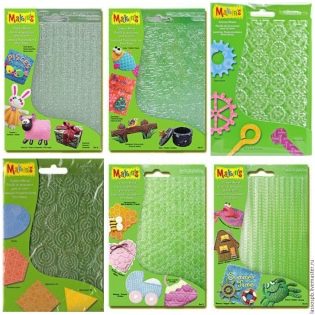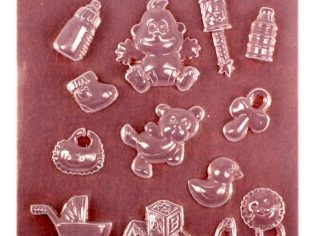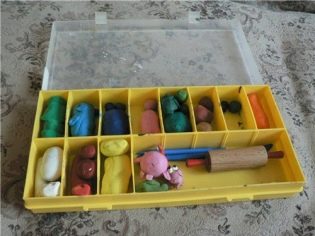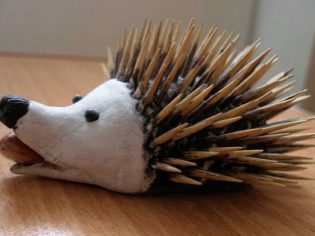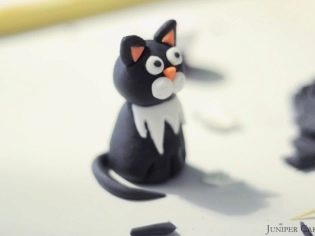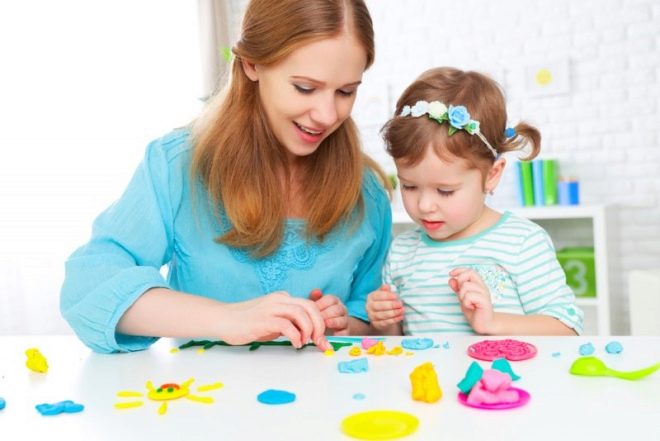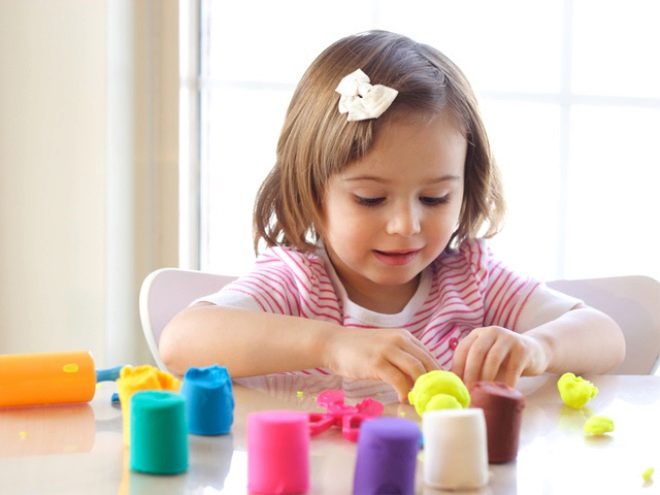Tools for plasticine
Sometimes, looking at the creations of masters created from plasticine, you just wonder: how do they do it? Why in the hands of even gifted children make just cute crafts, while others manage to create true masterpieces? The secret, as it turned out, is simple: the authors of the best models of modeling work not with bare hands, but are armed with a whole set of various specific tools that help give a piece of material any shape or texture.
Actually, the transition from the amateur to the professional level occurs exactly at the moment when the child begins to learn to confidently use the tools for modeling, so you should pay more attention to this moment.
Choosing the right material
The use of various tools for sculpting is needed in order to make figures of such a complex shape that you can’t do it with your bare hands. Although the auxiliary tool, of course, simplifies the task, yet it is a priori more complex, since it requires special tools. This puts forward two basic requirements for the material for modeling:
- Ability to keep fit. There is no sense that the mass, which was given the plausible features of an inspired object, “flows” or settles even under normal indoor conditions. For this reason, some especially liquid types of materials, which can be conventionally called clay (the most rarefied types of children's dough for modeling, liquid polymer clay), do not require the participation of tools. In principle, the same can be said about “smart” and ball clay and kinetic sand: the first is not used at all for handicrafts, the second is used more for handicrafts of applicative type, the third is afraid of the slightest blow of the wind.
- Long-term readiness for processing. To master the skill of using special tools, we need a long practice, but even if the child already knows how to work with them, he is not always able to create a complex work of art in an extremely short time. In children's art, there are rarely cases when children create truly full-scale large figures, but it is still better to choose a type of clay that does not harden to too "stone" state.
This is necessary in order for an unsuccessful product to be corrected or converted into something else, as well as for more successful subsequent joining of parts.
Based on the foregoing, the classic varieties of clay, elastic polymer clay and denser types of modeling dough are best suited for complex processing using tools for modeling.
What are needed?
This question can only be answered if we proceed from the specific tasks that the little master has set himself, because some tools used by real professionals for large-scale sculptural modeling will simply not be needed. In fact, children's tools for sculpting should be acquired gradually, as the baby masters new and new creative skills. We will try to systematize this category a bit in order to make it easier for parents to find everything they need.
Board or rug
This is the very first device that is necessary not only for masters, but also for beginners, and even for those children who will be sculpted on the second day of classes.It is no secret that most types of clay - pretty brandy; modern varieties are often advertised as devoid of this disadvantage, but in practice they are often simply worse than molded, and therefore mediocre suitable for creating three-dimensional figures. A plate or oilcloth designed specifically for such needs would greatly simplify the job of cleaning the room for the mother of a young talent.
In addition, there is another point. Specially selected base is usually different. perfect smoothness, which is not always possesses a well-worn table or other surface on which the baby molds. This allows you to create "sausages" and "balls" without the slightest deformation, which increases the aesthetic pleasure of the result.
Naturally, when cutting material on such a board, the surface of the table will not suffer.
You can buy a board for modeling in a store for children's creativity, and you can adapt the means at hand for it - for example, a cutting board or a piece of thick linoleum. The size can be any: A5 - for the youngest children who sculpts tiny crafts, A4 - for kids a little older, A3 - for practicing modeling with the whole family or creating huge play zones of plasticine.
If we are talking about cleanliness, we also immediately mention rags that will help keep the workplace and hands clean. So that the remains of plasticine from past works do not interfere with the creation of new figures, after work the board should be wiped with a piece of stiff fabric - for example, a piece of old jeans.
For cleaning delicate children's handles, a napkin made of soft flannel is better suited.
Stacks
Stacks are the most popular type of working tools for sculpting. There are a huge number of them, but in general they are designed for two things: cutting clay and giving the surfaces a certain characteristic shape (waviness, perfect smoothness, small point dents). In this case, stacks are usually made of plastic, which allows them to be light and safe for the child.
This tool can be a little pricked, but just cut it just will not work. Stacks are rarely replaced with handy objects, because most modern manufacturers usually put at least one in each set of clay, and you can purchase a whole set of different tools at once.
However, for the same cutting material stacks are not always suitable. They may lack sharpness due to their plastic nature, they also often give a ragged and inaccurate cut. For the manufacture of thin parts, experts advise to use small scissors for paper with rounded edges, an ordinary knife or even a thin fishing line.
It should be noted that some children's ready-made kits for working with clay include plastic scissors for cutting, but it is easy to predict that they would rather disappoint and push away from the fascination with modeling, rather than give a decent result. Special molds are also sold, allowing you to “stamp” flat figures of a certain type.
To give a complex shape
Theoretically, all the tools described in this article can be included in this category, but we will only include here what we have not yet talked about. A prime example is rolling pin, which is a regular of any modeling sets. When there is a need to cut parts from an ideally flat “sheet” of plasticine, the material needs to be rolled out by analogy with dough, because you cannot make such a “sheet” with your bare hands.
To do this, you can use a plastic rolling pin from the sets, a classic rolling pin for dough, or any object of a similar oblong shape. Of the improvised means, various bottles and other containers are very popular, because you can pre-fill with water inside: the warm one will immediately soften the material, the cold one will make the ready form become solid faster.
Bringing the production of thin "sausages" to a completely new level will allow an ordinary pharmaceutical syringe with a missing needle, however, for such operations, you will need mass for modeling with very high plasticity.
To give texture
The figures stuck together from plasticine usually have a relatively smooth surface, regardless of whether it is done with bare hands or with the help of primitive devices. If you want the surface to be rough or look like some other material, certain tools are also used.
Special attention should be paid to texture sheets. This product is a kind of sheet with a texture applied on it, mirror-reflecting the surface of one or another material - stone, wood, fabric. Since many varieties of clay in the process of work are quite soft, such a textured sheet leaves no print on the surface, giving the product an additional similarity with the intended result.
At home, you can use the materials at hand - most often as such serves the fabric.
On sale there are also special molds that imitate not so much the surface of the material as a certain volumetric pattern (although such are also textured sheets). This will allow to achieve on the surface of the finished product a complex interweaving of relief lines, which we would never have been able to achieve manually.
Utilities
Of great importance for the creation of these masterpieces are various plastic containers and lockable bucketsin which it is very convenient to store unformed clay, afraid of fresh air. In combination with water of different temperatures, this simple device can acquire a completely new role, as it helps to create. For example, cutting out small parts from a thin plasticine "pancake" will not be easy - it will crumple and tear at the incision site, leaving uneven edges.
To solve the problem, you just need to drop the "pancake" in a container with cold water! In a similar way, you can achieve the opposite effect by filling the pot with warm water and waiting a few minutes.
Although individual parts of plasticine are usually well connected with each other, when creating too complex, and especially "skewed" figures, it is not always possible to achieve the correct position of the parts with respect to each other. For fastening large parts, matches or toothpicks are used, threaded into both parts - in this way you can, for example, attach the head to the body of the figure.
In other cases, the connecting element can be a thread at all, although the latter is more often used not for connecting parts, but as a separate external part, “built in” with one end inside the plasticine base — for example, tails for animal figures do this.
Finally, do not forget about ordinary thick cardboardwhich can be an excellent basis for a small figure, as well as for an application, and even for a full three-dimensional composition.
This material does not add weight to the product at all, but it allows you to put the hand-made article anywhere without fear that it will stain the surface under it.
Terms of use
Since we are talking about children, the most important requirement for any tools for modeling is safety. Specially made devices are usually made of plastic, and even being created for cutting material, do not allow cutting, but they can have a rather sharp end, which is extremely undesirable to get into the eye. For this reason, modeling for young children (especially group ones) should be carried out. only in the presence of an adult who observes order.
In this case, the use of improvised means, in particular, for cutting the same material, should be limited to at least age.You should not use real scissors for cutting at least before going to school, and even then they should be special, with non-sharp ends.
It is worth paying attention also to the size - the child is unlikely to need a half-meter pruner, but there will obviously be more danger from it.
As for the real knife, used for accurate figured cutting, its application is better left to children who have already reached at least the age of 8-10 years, and then provided that they are distinguished by great accuracy of movements.
In general, tools for sculpting should be connected gradually. Throwing two dozens of different devices in front of a child, you just dumbfounded him - he will begin to try everything one by one, but in the end he will not learn to use anything and will be disappointed. You need to start with a simple - stack and rocking chairs in combination with the board, and only then gradually introduce new, more complex tools, gradually expanding the range of creative possibilities of the baby.
The fact that you can blind with a child of polymer clay, see the following video.
